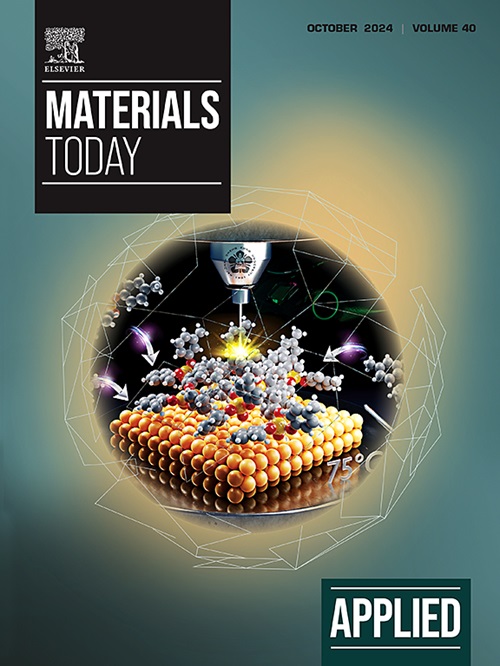Lyophilization of biomimetic amyloids preserves their regulatable, endocrine-like functions for nanoparticle release
IF 6.9
2区 材料科学
Q1 MATERIALS SCIENCE, MULTIDISCIPLINARY
引用次数: 0
Abstract
The secretory granules from the mammalian endocrine system are functional amyloids that act as dynamic depots to store and release protein hormones into the bloodstream. The controlled in vitro coordination between divalent cations and solvent-exposed histidine residues triggers reversible, cross-molecular interactions that result in granular protein aggregates with protein-leaking properties. While these synthetic particles are mechanically stable, they progressively disintegrate and release their protein building blocks, mimicking the performance of secretory granules. Envisaged as delivery systems for endocrine-like, time-sustained protein release, their clinical applicability should be supported by robust storage procedures, so far unset. Being lyophilization a desirable storage method for protein drugs, how this procedure could preserve the performance of clinically oriented functional amyloids is a neglected issue. We have here explored, tailored and validated lyophilization as an industrially and clinically friendly, fully scalable approach to the storage of functional amyloids aimed at secretion of protein-only nanoparticles. By doing so, protein-protein interactions in such materials have been characterized, and citrate identified as an efficient modulator of the temporal secretion profile, through which the sustainability of the leaking process can be finely regulated.冻干生物仿生淀粉样蛋白可保留其类似内分泌的可调节功能,以便于纳米粒子的释放
哺乳动物内分泌系统的分泌颗粒是一种功能性淀粉样物质,它是储存蛋白质激素并将其释放到血液中的动态仓库。二价阳离子与暴露在溶剂中的组氨酸残基之间的体外可控配位引发了可逆的跨分子相互作用,从而形成具有蛋白质泄漏特性的颗粒状蛋白质聚集体。虽然这些合成颗粒在机械上是稳定的,但它们会逐渐分解并释放其蛋白质构件,模拟分泌颗粒的性能。这些颗粒被设想为类似于内分泌、具有时间持续性的蛋白质释放系统,其临床应用性应得到可靠的储存程序的支持,而这些程序至今尚未确定。冻干是一种理想的蛋白质药物贮藏方法,但如何通过这种方法保持临床导向的功能性淀粉样蛋白的性能是一个被忽视的问题。在此,我们探索、定制并验证了冻干法,将其作为一种工业和临床友好型、完全可扩展的方法,用于储存以分泌纯蛋白质纳米粒子为目的的功能性淀粉样蛋白。通过这种方法,我们确定了此类材料中蛋白质与蛋白质之间相互作用的特征,并确定柠檬酸盐是时间分泌曲线的有效调节剂,通过它可以精细调节泄漏过程的可持续性。
本文章由计算机程序翻译,如有差异,请以英文原文为准。
求助全文
约1分钟内获得全文
求助全文
来源期刊

Applied Materials Today
Materials Science-General Materials Science
CiteScore
14.90
自引率
3.60%
发文量
393
审稿时长
26 days
期刊介绍:
Journal Name: Applied Materials Today
Focus:
Multi-disciplinary, rapid-publication journal
Focused on cutting-edge applications of novel materials
Overview:
New materials discoveries have led to exciting fundamental breakthroughs.
Materials research is now moving towards the translation of these scientific properties and principles.
 求助内容:
求助内容: 应助结果提醒方式:
应助结果提醒方式:


